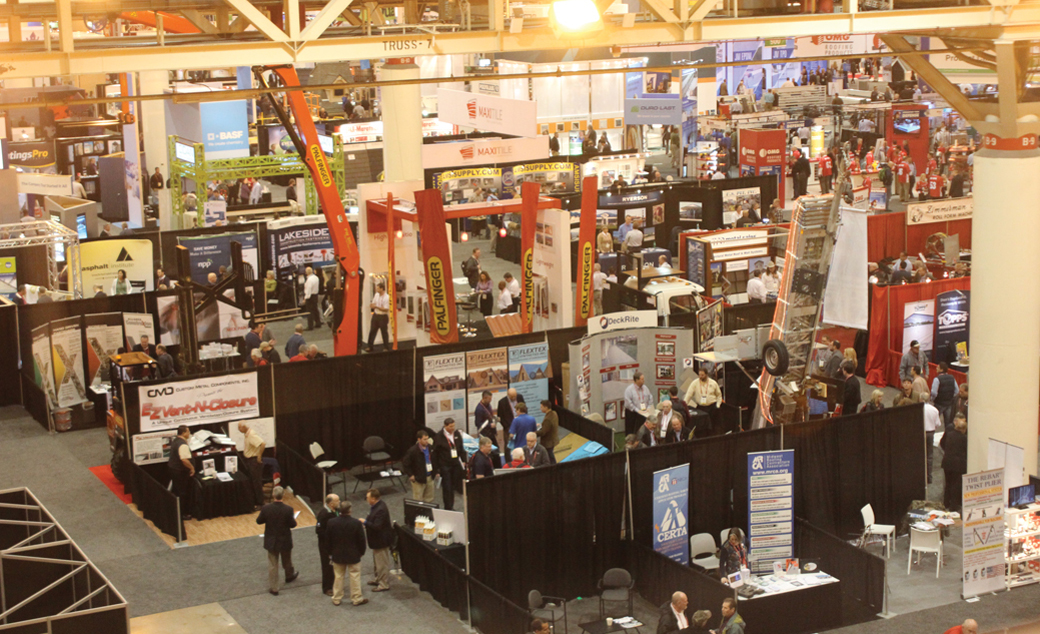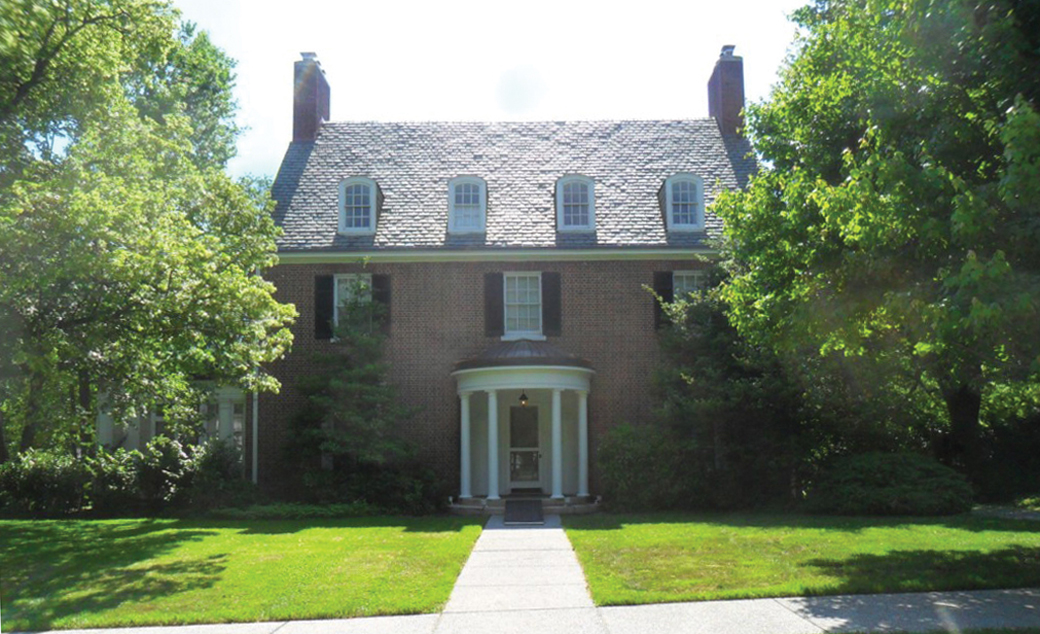Metal has been used in roofing applications for centuries. The copper roof system on St. Mary's Cathedral in Hildesheim, Germany, was installed in A.D. 1280 and still is in use today. Metal's durability has made it an excellent choice for homes, agricultural facilities, hangars and industrial buildings to name just a few. Thanks to recent technological advancements in high-performance coatings, new weatherization practices and unlimited design options for panel profiles and color options, metal roofing panels have gained more credibility. Metal panels are 100 percent recyclable, and their capability for integration into roof-mounted renewable-energy equipment catches the attention of the ecologically inclined.
With these aesthetic and functionality advancements in metal roofing products and technology, it's no surprise more homeowners, residential architects and designers are turning to metal. This demand has increased the need for professional roofing contractors who can install metal roof systems. If you're looking for a way to expand your residential business, adding metal roof systems to your portfolio of available services is one way to do so.
Specialized training
The higher demand for metal roof systems has allowed contractors to expand their businesses to offer metal as a roofing option. But without specialized training to properly install metal roofing, this business expansion cannot be actualized. The importance of installation training, and its many components, cannot be overstated.
Installing a metal roof system is vastly different than installing asphalt shingles, shakes, terracotta, slate or any other type of roof system. As a result, installers must be trained how to handle, prepare and properly install metal roof systems. Many metal roofing material manufacturers offer training and certification programs for installers. These training programs show installers how to work with specific types of metal roof systems and the specialty tools required for installation.
It's also important for product representatives to know how to sell metal because there still are several misconceptions and questions homeowners may have about metal roofing. It's crucial your salespeople know how to address these misperceptions and consult with homeowners to determine the best metal roofing options for their homes.
Handling and storage
Training often includes handling and storage of materials. Panels usually come in standard lengths of 8, 10 and 12 feet. However, many manufacturers accept custom orders. The weights and dimensions of metal roof panels obviously are different than a bundle of asphalt shingles or a crate of shakes, so some manufacturers and distributors have a fleet of delivery vehicles or use a delivery service to deliver the panels. This is something you should keep in mind because your company likely will not have the ability to haul panels in the bed of a typical work truck. If you decide to transport the panels via flatbed truck or trailer, it's best to use mechanical offloading equipment such as a truck crane or forklift. This ensures worker safety and eliminates the need to offload the panels by hand, which takes more time and increases the chance of damaging a panel.
Panel storage is another important consideration addressed in most training. If panels will not be installed immediately when they arrive on a job site, they should be covered by a tarp to protect them from potential ultraviolet damage and moisture. Panels generally are shipped with a film covering to protect the surface. The sun's ultraviolet rays can cause this film to break down and potentially affect panel coating.
Also, panels should be stored high enough off the ground to allow for air circulation and prevent contact with accumulating water. If the back of the panels get wet, the moisture can reach the roof's substrate and potentially damage the roof deck.
Preparing a job
Most manufacturer training and certification programs educate installers about how to read and understand project drawings and details and how to develop a procedure plan. Your installers will need to consider the best panel layout for a roof and have a plan for installing panels around openings, valleys, peaks and eaves. Thinking through the project and having a plan will allow the installation to go smoothly and avoid unnecessary holdups.
Important details
A number of other items are addressed in most installer training programs. Understanding what type of underlayment to use, as well as panel options and accessories, is crucial. For example, basic 30-pound felt, synthetic underlayment or high-temperature, self-adhering underlayment are compatible options for a metal roof system. However, it's important to know when it is acceptable to use each option. And when consulting with a homeowner, an installer should understand panel attachment, flashings and color options.
Tools and equipment
Unlike other roof systems, metal roofing requires the following standard and specialized tools to ensure a successful installation:
- Standard tools
- Hammer
- Tape measure
- Combination square
- Chalk line
- Screwdriver
- Scaffolding and ladders
- Safety equipment
- Marking tools
- Hand-drills and drivers (Drills and drivers with an adjustable clutch are recommended. This will ensure the correct amount of torque is applied to the screw when installing metal panels.)
- Drill bits (1/4- and 5/16-inch drill bits and Phillips head drivers)
- Specialized tools
- Snips are used for cutting metal panels and flashings to fit around obstructions and to trim to appropriate sizes.
- Inline shears are mechanical cutting shears that have two jaws and a center reciprocating blade. Inline shears are best used when a straight cut is required on metal panels or flashings.
- Turbo shears (also known as unishears) use a single blade for cutting metal panels, flashings and trim. These shears attach to a battery-operated drill. Turbo shears can make cuts over ribs in metal panels that cannot be made with inline shears.
- Rivet guns are used for attaching pieces of trim to each other with a minimally exposed fastener.
- Hand folders (also known as hand seamers) are used to fold, or bend, metal panels, flashings and trim.
- Bar folders are used to hem the end of panels or turn the metal up 1 1/2 inches.
- Rolling benders turn the metal up to 180 degrees.
Selling metal roof systems
Once your installers have the necessary training and equipment to install metal roof systems, they need to be able to sell the features and benefits of metal roof systems. It's important to be able to answer all the questions a homeowner may have in a consultative manner to build his or her trust.
The first step is to have appropriate knowledge of industry and local codes and standards and be able to discuss them if a homeowner has questions. Second, homeowners are becoming more cautious when hiring contracting companies. Be sure you have the appropriate licensing and insurance for your territory and present this to a client if requested. It also helps build a client's confidence by being certified by a manufacturer through training and being part of an association such as NRCA. Each of these steps will help build a homeowner's trust in your company and a fruitful relationship.
Many homeowners like to be educated about the roofing option that is best for their specific needs; the performance of the different materials; the costs involved; and considerations for each type of roofing material. There also are several outdated myths about metal roof systems that can be overcome by supplying a homeowner with current and accurate information.
Why metal?
A majority of residential roof systems in the U.S. are asphalt shingle, a common material used by builders for decades, but homeowners are increasingly searching for other roofing options. Metal is a great alternative to asphalt and other traditional roofing materials for the following reasons:
Energy savings: A metal roof system can reduce energy costs. Many quality manufacturers offer roof colors with cool pigment technology that are ENERGY STAR®-listed and certified by the Cool Roof Rating Council. These colors reflect the sun's solar energy, reducing the heat load on homes. This reduces energy expenditures for cooling the home.
Reduced insurance premiums: Metal is fire-resistant and will protect a home from burning embers that may come from forest or canyon fires. Also, metal roof systems provide superior performance against heavy wind or hail. Homes that are in areas that may experience extreme weather or environmental conditions may qualify for a discounted insurance rate. Discounts vary by the provider and geographical area.
Virtually maintenance-free: Metal roof systems are easily maintained by simply washing with plain water or mild household detergents for areas with heavy-dirt deposits. Removing debris that may have fallen on the roof and occasional light cleaning will maintain a good appearance.
Longevity: A quality metal roof system likely will be the last roof a customer will purchase for a particular building. In 2014, the Metal Construction Association released research results stating metal can last 60 years or longer (more than three times longer than asphalt).
Resale and added value: Many home appraisers appreciate the value and durability of metal roof systems. According to the Metal Roofing Alliance, a quality metal roof system can increase the value of a home by as much as $1.45 per square foot compared with an asphalt shingle roof system, and metal roof systems can redeem up to 95 percent of their cost at resale.
Aesthetics: Metal roof systems offer a wide variety of profiles and unlimited color choices to dramatically improve the curb appeal of any style home. In addition to the traditional roster of metal panel choices, advancements in panel production have made new design choices available, including panels that resemble slate, wood shakes, terracotta and asphalt shingles.
Environmentally responsible: According to the American Iron and Steel Institute, steel is the most recycled material in the world. Quality metal roof panels are 100 percent recyclable and contain a high percentage of recycled material. The Metal Roofing Association has reported traditional roofing products, including asphalt shingles, contribute an estimated 20 billion pounds of waste to U.S. landfills annually.
Metal roof considerations
There are several types of metal roofing options available in the current market. When helping clients choose the perfect roof for their homes, there are a few key things to think about.
First, determine the panel to be used and how it will be attached to the structure. Exposed fastened panels are an economical option that uses fasteners to penetrate a roof panel to be attached to a roof. As the name suggests, this leaves the fasteners exposed to the elements. Installers should tear off the existing roof covering and add a high-temperature peel-and-stick underlayment to the entire roof deck to prevent the risk of leaks. Using high-quality screws with a rubber gasket will ensure the roof performs to its highest level.
Another type of roof panel is concealed fastened. These panels are fastened to the roof without screws penetrating the exposed portion of the metal. This is done in one of two ways:
- A clip is attached to the roof substrate, holding the roof panels in the rib where two panels connect—often this is called a 'floating' roof and allows for thermal movement.
- Screws are inserted through one edge of a panel and into the roof substrate. The adjoining panel locks in place by overlapping the screwed edge of the installed panel, covering the row of screws along the edge.
Because the attachment mechanism is hidden from the elements and view, concealed fastened panels provide a sleek aesthetic and the ultimate in weather and water protection.
A roof panel's profile and rib height also are important considerations for a roof's overall look. Low rib heights give a softer appearance, and taller ribs are more pronounced. Some panels have a flat expanse between seams, and others feature several minor ribs per panel.
Installers also should be familiar with the gauge of metal panels. Gauge is the measurement of sheet metal thickness; the higher the gauge number, the thinner the material. For example, 29 gauge is thinner than 26 gauge.
The coating on metal roof panels should be one of the top concerns for homeowners. Quality metal panels have factory-applied multilayered coatings for long-term corrosion resistance. When coated with cool pigment technology, a metal roof system will remain cooler than other residential roof system types on hot days. Quality coating systems offer superior protection and durability, have undergone real-world testing and usually come with a warranty that guarantees optimal performance.
Overcoming metal myths
Throughout the years, there have been several developments in residential construction—and metal roofing is no exception. However, there still are many misconceptions about metal roof systems. When an installer is consulting with a client, he or she likely will encounter some metal myths on a regular basis. Explaining the benefits of metal and sharing accurate information about metal roofing will dispel these myths. Some of the myths installers are likely to encounter include the following:
"When it rains, metal roofs are noisy."
This is one of the most common misconceptions about residential metal roofing. This likely stems from a common
experience with the sound rain can make on old barns and worn buildings. The difference between a barn and
residential roof is a solid roof deck. According to the Metal Roofing Alliance, a solid roof deck combined with
appropriate underlayment and attic insulation dampens noise, resulting in a roof that is no more or less noisy than
any other roof system type.
"Metal roofs get struck by lightning."
Lightning strikes the highest point in an area regardless of material. Metal roof systems are as likely to be struck
as any other type of roofing material.
"Metal roofs are heavy."
Surprisingly, metal roof systems generally are 50 percent lighter than asphalt shingle roof systems and 75 percent
lighter than concrete tiles, fiber cement shakes and slate.
"Metal roofs rust."
Metal roof systems have come a long way. Quality roof panels feature multilayer protection that starts with a
galvanized coating over the base metal and employ high-quality color systems with warranties guaranteeing
performance. The advanced alloys in quality coatings undergo real-world weathering tests to ensure your client's
metal roof system will remain impervious to corrosion for decades to come. It's also important to use high-quality
attachment screws and accessories to ensure they do not corrode and stain panels. Be aware of low-quality and
cut-rate metal roof panels as these usually are made with inferior materials and do not include a warranty associated
with high-quality panels.
"You can't walk on a metal roof."
Metal roofing is durable. With adequate fall protection, you can safely walk on a metal roof without causing damage
to panels. The solid roof deck under the metal panels provides ample structure to easily hold a person.
"Metal roofs are hot."
Roofs naturally get hot under sunlight. However, metal roof systems are available in a variety of cool colors that
reflect solar heat. Metal also releases solar heat quicker than asphalt shingles, reducing the heat load on a home.
According to the Heat Island Group, reflective metal roof systems reduce the need for cooling homes during hot summer
months by up to 40 percent, saving energy.
The true cost of metal
Metal has a higher initial cost than some other roofing materials. This is a factor that should be considered and discussed with homeowners. However, few homeowners realize asphalt roof systems are replaced two to four times as often as metal. Although the initial cost of a metal roof system is higher than other materials, its life cycle cost is the same, and often less, when you consider how often an asphalt roof system is replaced compared with a metal roof system.
A growing field
As residential metal roof systems continue to gain popularity, there will be more demand for knowledgeable roofing contractors. Now is an ideal time for you to offer this service in this growing field.
Because metal roof system installations are so different from other roof systems, it's important your installers receive proper training. You can accomplish this by partnering with a manufacturer that provides the training, technical and customer support, sales collateral and highest-quality material that will ensure your metal roof system installations are successful. You then can be confident when consulting with homeowners about their options in metal roofing, ultimately growing your business.
Bill Robin is market development manager for Metal Sales Manufacturing Corp., Louisville, Ky.



